Chapeau:
A research platform composed of the Department of Electrical Engineering, Energy Internet Research Institute of Tsinghua University and Tsinghua Sichuan Energy Internet Research Institute has developed the world’s first Coupled Negative Voltage Hybrid DC circuit breaker topology, which achieves a breakthrough in commutation technology with low-loss and high-reliability, and addresses the challenges of bi-directional flow control and efficient high-capacity current interruption of power electronic switches in DC power grid.
This article is authored by the Department of Electrical Engineering of Tsinghua University.
On June 9, an artificialDC short circuit test was conducted at the Kangbanuo’er HVDC converter station, which is part of the world's first ultra-high voltage flexible direct current power grid project. With a flash of arc, the 535kV DC circuit breaker of the Funo line completed the breaking and reclosing operation within 3ms. This marked the successful completion of the artificial short circuit test of the 535kV DC circuit breaker, jointly developed by Tsinghua University and Beijing Power Equipment Group (BPEG).
Innovative DC-breaking Technology with Key Indicators Reaching the International Leading Level
One of the most taxing tasks in the commissioning phase of DC power grids is the artificial short circuit test. The success of this test showcased the advanced DC-breaking technology developed by Tsinghua University and the reliability of circuit breakers. It also provided a strong basis for the official launch of the project.
The World's First Ultra-high Voltage Flexible DC Power Grid with Real Networking Capability
The Zhangbei Renewable Energy Flexible DC Power Grid Test and Demonstration Project (“Zhangbei Flexible DC Power Grid Project” for short), of which the Kangbanuuo’er converter station is part of, has created the world's first ultra-high voltage flexible DC power grid with real networking capability. It has the highest voltage level (±500kV) and the largest transmission capacity (maximum transmission capacity of 4500MW, total conversion capacity of 9000MW) in the world. The project uses innovative technology and equipment that are unprecedented in the field. As a key supporting facility for the 2022 Beijing Winter Olympics, it is of great significance to achieving the goal of zero carbon emissions for the event.
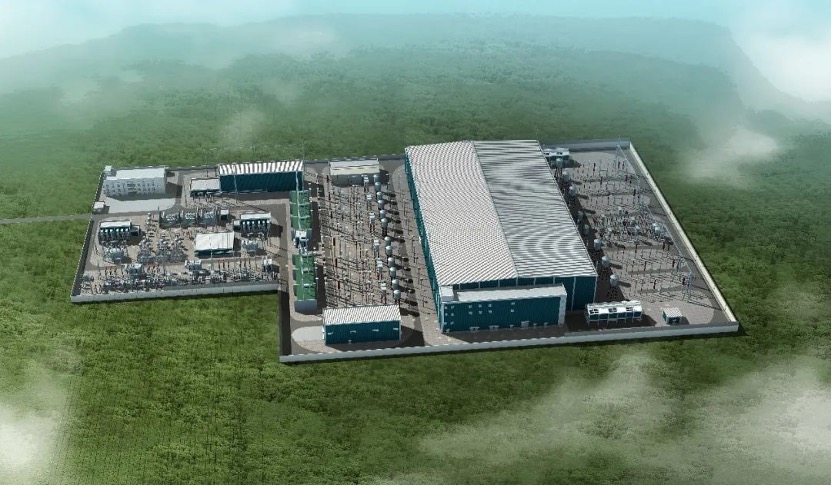
Aerial view of ± 500kV Kangbanuo’er converter station
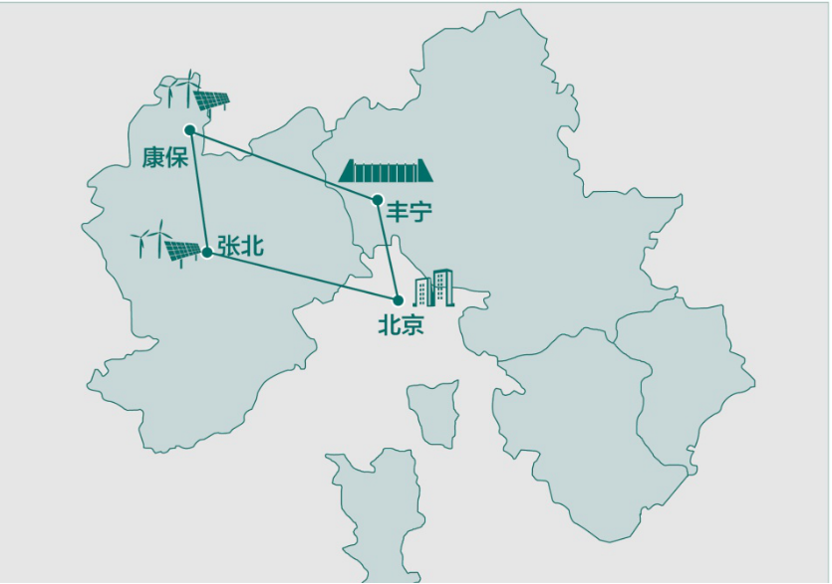
Schematic diagram of ± 500kV flexible DC power grid
A DC circuit breaker is a vital component of the flexible DC power grid, as it performs the functions of closing, carrying, and breaking the current under normal and abnormal conditions, switching the system operation mode, and isolating the fault current to protect the system. Unlike AC current, which has a natural zero crossing point, DC current requires a forced zero crossing, which involves the factors of arc duration and system overvoltage. Therefore, breaking DC current is much more challenging than breaking AC current. The high-voltage DC circuit breaker is one of the key challenges in the development and application of DC power grid technology.
The Zhangbei Flexible DC Power Grid Project adopts three different technical approaches: hybrid, mechanical, and coupled negative voltage. The project features a DC circuit breaker that was co-developed by Tsinghua University and BPEG, which employs a novel coupled negative voltage technology with exclusive intellectual property rights. This technology ensures the reliable, flexible, and economical operation of the Funuo line of the Zhangbei Flexible DC Power Grid.
Tsinghua University Developed the World’s First Coupled Negative Voltage DC Circuit Breaker Topology to Address the Global Challenge of DC-breaking Technology
At the Conference International des Grands Reseaux Electriques (CIGRE), large-capacity DC breaking was noted to be a global technical challenge. Facing the fault-clearing requirements of the high-voltage DC power grid, and aiming to overcome the DC breaking challenge, the DC technology research team composed of Professor Rong Zeng, Associate Professor Zhanqing Yu, Associate Professor Yulong Huang and other faculties, students and researchers of the Department of Electrical Engineering of Tsinghua University, relying on the research platform consisting of the Department of Electrical Engineering, Energy Internet Research Institute of Tsinghua University and Tsinghua Sichuan Energy Internet Research Institute, has achieved a world-first innovation in developing a coupled negative voltage hybrid DC circuit breaker topology, which achieves a breakthrough in commutation technology with low-loss and high-reliability, and addresses the challenges of bi-directional flow control and efficient high-capacity current interruption of power electronic switches in DC power grid. The research results have complemented the theory and technical system of large-capacity DC ultra-fast breaking. The team also cooperated with BPEG to develop two ultra-high voltage 535kV DC circuit breakers for the Zhangbei Flexible DC Power Grid Project. The artificial DC short circuit test verified the excellent performance of the coupled negative voltage technology.
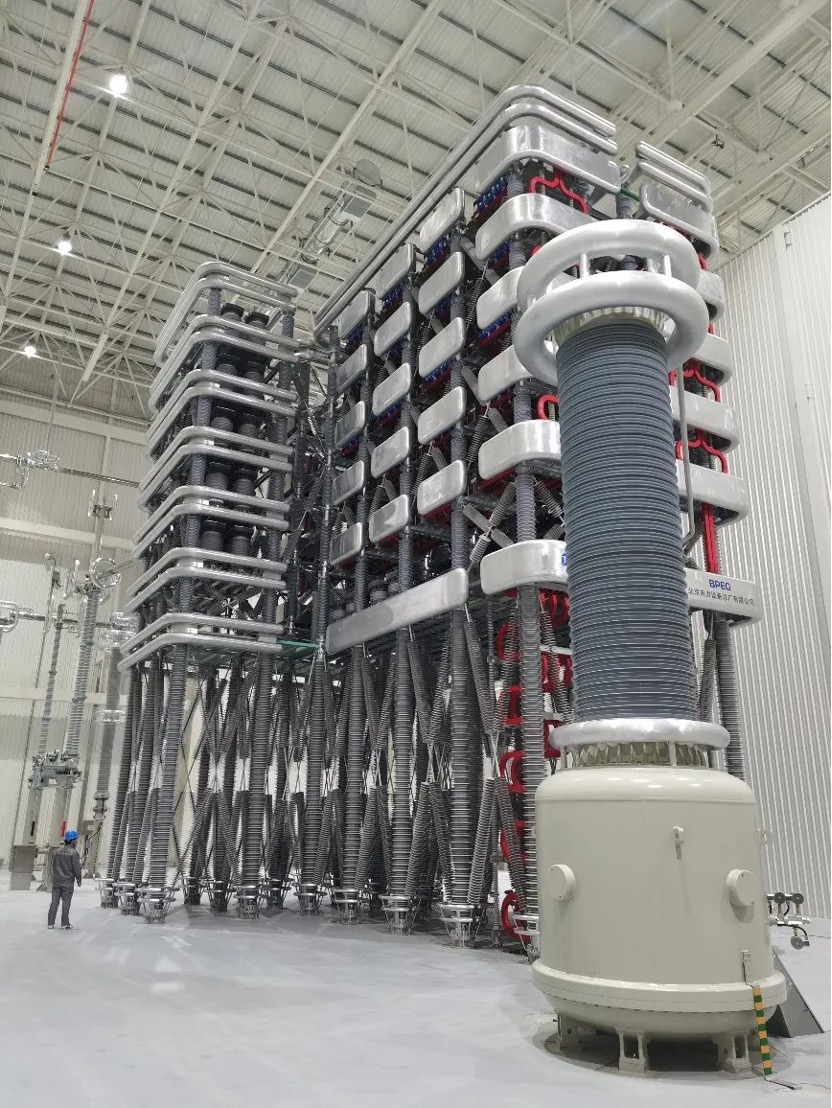
A 535 kV coupled negative voltage hybrid DC circuit breaker jointly developed by Tsinghua and BPEG
4 Technical Advantages of Coupled Negative Voltage Hybrid DC Circuit Breakers
Advantage 1
A topology with low loss and high reliability. It consists of three branches: a main current branch with only mechanical switches in series, a transfer branch with power electronic switches, and an energy absorption branch with arresters. This design overcomes the cooling challenge of the hybrid circuit breaker and reduces the on-state loss significantly. It eliminates the need for water cooling, so that it can save more space. It increases the reliability of the device and lowers operation and maintenance costs.
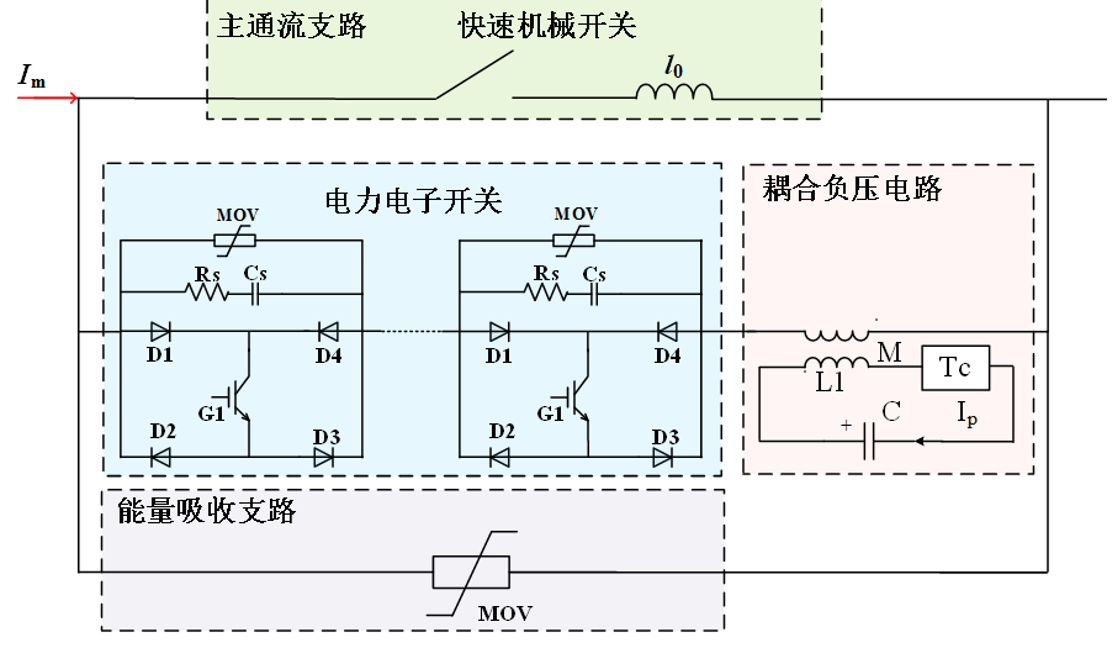
Block diagram of coupled negative voltage hybrid DC circuit breaker
| 主通流支路 |
main current branch |
| 快速机械开关 |
fast mechanical switch |
| 电力电子开关 |
power electronic switch |
| 耦合负压电路 |
coupled negative voltage circuit |
| 能量吸收支路 |
energy absorption branch |
Advantage 2
A main flow branch with high redundancy and fast recovery capability. It uses a fast mechanical switch that consists of several 100kV vacuum switches in series. This switch has a fast recovery time and high reliability. Each vacuum switch has a world-class voltage level.
Advantage 3
A fault commutation solution that is highly controllable and reliable. It commutes by using a coupled negative voltage device. The circuit breaker’s internal parameters set the limit for the commutation time. This guarantees that the commutation is reliable and fast for any current within the range of -25kA~0~+25kA. The commutation duration stays the same for small currents, and is highly controllable.
Advantage 4
Power electronic switches with high margins and stability. The transfer branch adopts a cross-bridge power electronic unit topology based on conventional recovery speed diodes and composite nonlinear impedance, which saves 40% of the cost compared to traditional circuit breaker solutions. It has a large breaking current margin with high reliability.
Implications
Through years of innovation and technology accumulation, Tsinghua University has achieved breakthroughs in the key technology of DC circuit breakers, covering topology, commutation technology, product development and engineering application. It has also realized the serial development and large-scale application of various types of DC circuit breakers.
To date, Tsinghua University has developed DC circuit breakers with different voltage levels, such as 375V/480V/10kV/40kV/80kV/500kV. It has also created the world’s first three-port DC circuit breaker and the 535kV DC circuit breaker which has the highest voltage and current level and the strongest breaking capacity. In collaboration with Beijing Power Equipment Group, Taikai Group and other enterprises, Tsinghua University has completed the industrialization of its research results and applied the products on a large scale in several projects, such as Zhuhai Tangjiawan DC Distribution Network, Dongguan AC and DC Hybrid Distribution Network, Suzhou Wujiang DC Distribution Network, Zhangbei Flexible DC Power Grid and so on. These products have ensured the safe and reliable operation of many DC projects, demonstrating important academic significance and engineering application value.
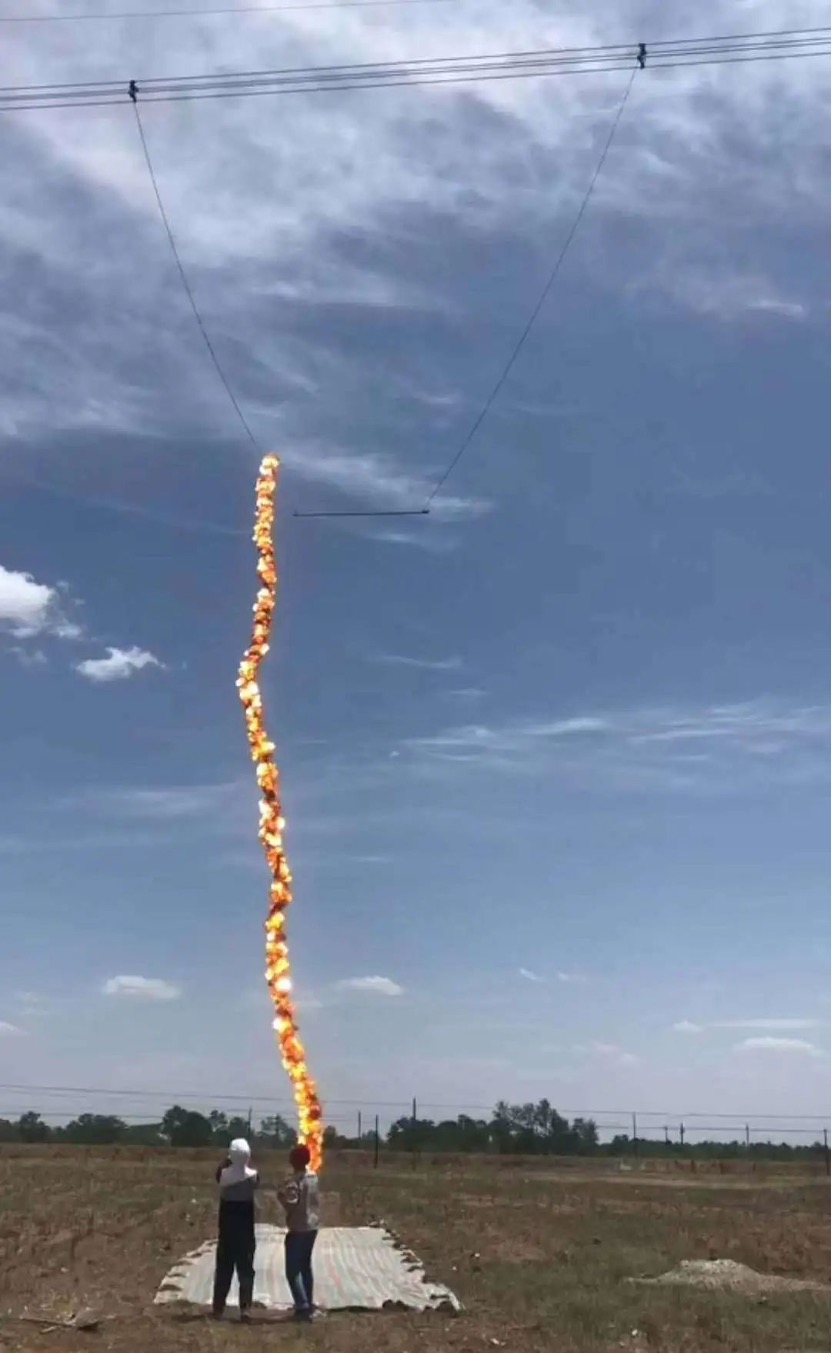
The artificial short circuit test of the 535kV DC circuit breaker of the Funuo line
The application of 535kV DC circuit breaker in the Zhangbei Flexible DC Power Grid Project is a breakthrough demonstration of the scientific research achievements that serve the major strategic needs of China. It also casts great significance for enhancing China’s equipment manufacturing innovation and advancing China’s flexible DC power grid technology.
More information on DC circuit breakers can be found on the DC Research Center website (copy the website link below):
http://dc.eiri.tsinghua.edu.cn
About the team
The DC Research Center of the Energy Internet Research Institute at Tsinghua University was founded in 2015 under the guidance of Professor Rong Zeng of the Department of Electrical Engineering of Tsinghua University.
The Department of Electrical Engineering has a strong scientific research strength, which the Center leverages to form a research team with high-level academic research, forward-looking technological innovations, and practical industrial development capabilities. The Center’s core mission is to conduct R&D of key technologies and equipment for DC power transmission and distribution. It focuses on the HVDC power transmission and medium and low-voltage DC power distribution technology to carry out theoretical research, technological breakthroughs and engineering construction at device, equipment, and system levels. The Center aims to become the core concept disseminator, theoretical and technological leader, standard and application practitioner of DC power grid, preparing for the renewable energy revolution.